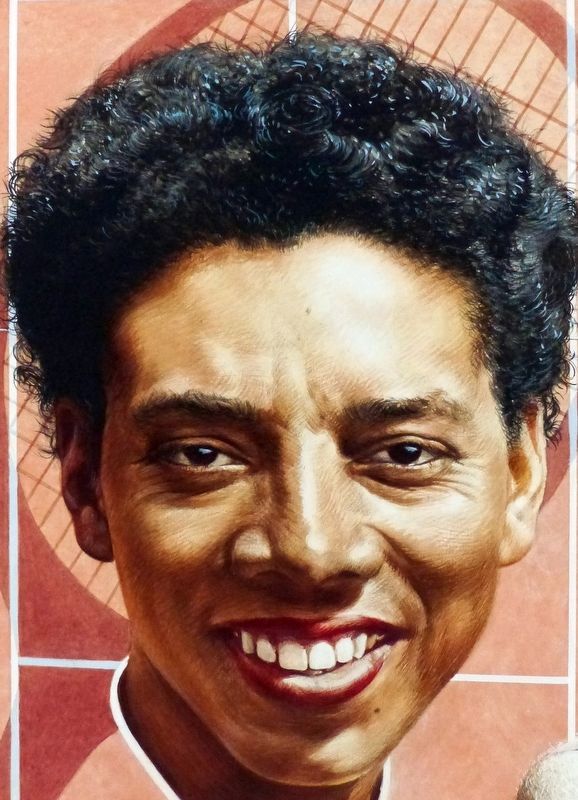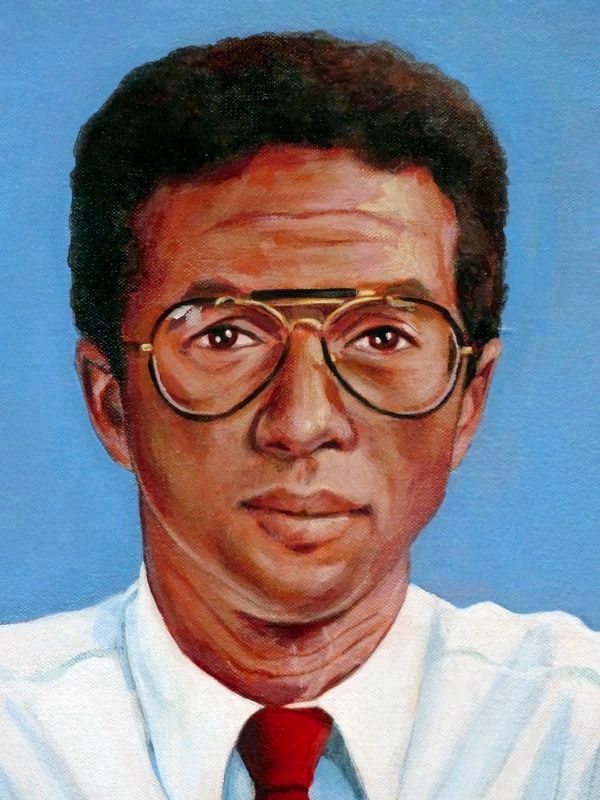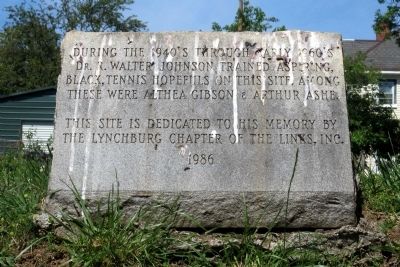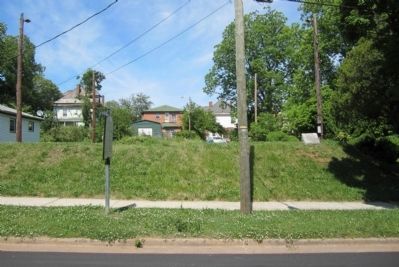Diamond Hill in Lynchburg, Virginia — The American South (Mid-Atlantic)
Site of Dr. Johnson's Tennis Court
Erected 1986 by Lynchburg Chapter of the Links, Inc.
Topics. This historical marker is listed in these topic lists: African Americans • Civil Rights • Sports.
Location. 37° 24.187′ N, 79° 9.051′ W. Marker is in Lynchburg, Virginia. It is in Diamond Hill. Marker is at the intersection of Pierce Street and 15th Street, on the right when traveling north on Pierce Street. Touch for map. Marker is at or near this postal address: 1422 Pierce Street, Lynchburg VA 24501, United States of America. Touch for directions.
Other nearby markers. At least 8 other markers are within walking distance of this marker. Dr. Robert Walter Johnson (here, next to this marker); Dr. Robert Walter Johnson House and Tennis Court (a few steps from this marker); Professor Frank Trigg (a few steps from this marker); Anne Spencer Home and Edankraal (about 400 feet away, measured in a direct line); The Anne Spencer House (about 400 feet away); In Tribute to Anne Bethel Spencer (about 400 feet away); a different marker also named Anne Spencer House (about 400 feet away); Anne Spencer (about 400 feet away). Touch for a list and map of all markers in Lynchburg.
Also see . . . Dr. Walter Johnson House and Tennis Court. National Register of Historic Places Registration Form. (Submitted on September 16, 2017, by Allen C. Browne of Silver Spring, Maryland.)

Photographed By Allen C. Browne, July 25, 2017
3. Althea Gibson, 1927-2003
This 1957 watercolor portrait of Althea Gibson by Boris Chaliapin, for the cover of Time Magazine, hangs in the National Portrait Gallery in Washington, DC.
“In 1955, Althea Gibson contemplated retiring from competitive tennis. Had she done so, she would have denied herself her greatest moment. Two years later, this ‘lanky jumping jack of a girl,’ who had begun her sports career playing paddle tennis in New York's Harlem, was arriving home from England, the winner of the women's singles and doubles titles at the prestigious Wimbledon championships. Within another two months, she had won the U.S. women's singles crown at Forest Hills, New York, and emerged triumphant as America's clay court champion as well. ‘Althea Gibson,’ reported Time magazine in its cover story for August 26, 1957, ‘is not the most graceful figure on the courts, and her game is not stylish.&rsqou; Nevertheless, it was clear that at thirty an age when most tennis players lose their competitive edge she was only then hitting her stride.” -- National Portrait Gallery
“In 1955, Althea Gibson contemplated retiring from competitive tennis. Had she done so, she would have denied herself her greatest moment. Two years later, this ‘lanky jumping jack of a girl,’ who had begun her sports career playing paddle tennis in New York's Harlem, was arriving home from England, the winner of the women's singles and doubles titles at the prestigious Wimbledon championships. Within another two months, she had won the U.S. women's singles crown at Forest Hills, New York, and emerged triumphant as America's clay court champion as well. ‘Althea Gibson,’ reported Time magazine in its cover story for August 26, 1957, ‘is not the most graceful figure on the courts, and her game is not stylish.&rsqou; Nevertheless, it was clear that at thirty an age when most tennis players lose their competitive edge she was only then hitting her stride.” -- National Portrait Gallery

Photographed By Allen C. Browne, July 25, 2017
4. Arthur Ashe, 1943-1993
This 1993 portrait of Arthur Ashe (1943-1993) by Louis Briel hangs in the National Portrait Gallery in Washington, DC.
“Armed with superb natural talent, a keen competitive spirit, and poise that set him apart from his rivals, Arthur Ashe made his way from the segregated playground courts of his youth to the pinnacle of the tennis world. Rated among the world's top ten players while still in college, Ashe reached the number-one ranking in spectacular fashion in 1968. After capturing the U.S. amateur title, he served an astonishing twenty-six aces in the final to become the first African American man to claim the U.S. Open championship. Ashe went on to record multiple tournament victories, including his memorable triumph over Jimmy Connors at Wimbledon in 1975. Following a heart attack that forced his retirement in 1980, Ashe dedicated his energies to humanitarian causes. He became a leader in the fight against AIDS in 1992, after revealing that he had contracted the virus through a transfusion.” — National Portrait Gallery
“Armed with superb natural talent, a keen competitive spirit, and poise that set him apart from his rivals, Arthur Ashe made his way from the segregated playground courts of his youth to the pinnacle of the tennis world. Rated among the world's top ten players while still in college, Ashe reached the number-one ranking in spectacular fashion in 1968. After capturing the U.S. amateur title, he served an astonishing twenty-six aces in the final to become the first African American man to claim the U.S. Open championship. Ashe went on to record multiple tournament victories, including his memorable triumph over Jimmy Connors at Wimbledon in 1975. Following a heart attack that forced his retirement in 1980, Ashe dedicated his energies to humanitarian causes. He became a leader in the fight against AIDS in 1992, after revealing that he had contracted the virus through a transfusion.” — National Portrait Gallery
Credits. This page was last revised on February 1, 2023. It was originally submitted on May 27, 2014, by Bernard Fisher of Richmond, Virginia. This page has been viewed 731 times since then and 17 times this year. Photos: 1, 2. submitted on May 27, 2014, by Bernard Fisher of Richmond, Virginia. 3, 4. submitted on September 19, 2017, by Allen C. Browne of Silver Spring, Maryland.

